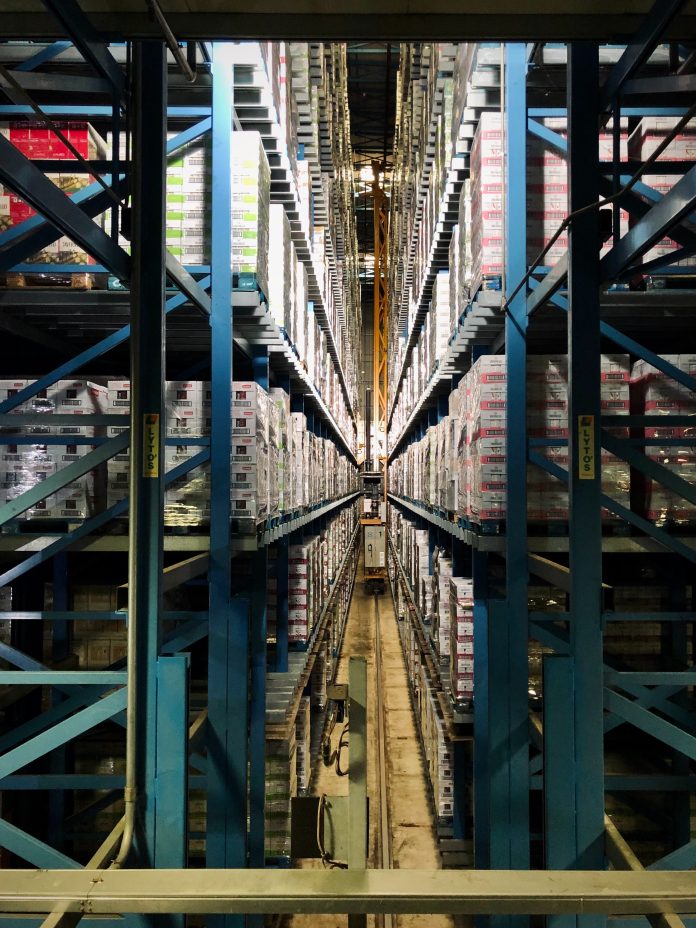When it comes to running a successful warehouse operation, one of the key factors that can greatly impact efficiency and productivity is the design of the warehouse itself. A well-designed warehouse not only maximizes storage space but also ensures smooth workflow and minimizes operational costs.
Making the process easier, in this blog, we will explore some valuable tips from industry professionals on how to prepare the best warehouse design.
1. Analyze and optimize space utilization
Before diving into the design process, it’s crucial to conduct a thorough analysis of your space requirements and inventory. Understanding the types of products, their storage needs, and the frequency of movement will help you determine the most effective layout.
Consider utilizing vertical space through mezzanine floors or high racks to make the most of your warehouse’s space.
To do this more efficiently, retail and wholesale businesses can use suitable mapping software. Several mapping platforms, such as MappedIn, offer warehouse mapping software, as indoor mapping in warehouses using MappedIn is easier, smarter, and more accurate.
2. Create clearly defined zones
Efficient warehouse design relies on clearly defined zones for various activities such as receiving, storage, picking, packing, and shipping.
The idea is to locate these zone in a way that the travel time is minimized and operations are streamlined. Clearly mark and separate these areas using signage or color-coded floor markings to enhance visibility and reduce the chances of errors.
3. Optimize workflow
A well-designed warehouse should facilitate smooth workflow and minimize unnecessary movement. Map out the flow of goods from the moment they enter the warehouse to their final destination.
It’s advisable to ensure that there are clear pathways for forklifts or other equipment and strategically position storage racks and shelving units to reduce the distance traveled during the picking and stocking processes.
4. Embrace automation and technology
Incorporating automation and technology into your warehouse design can significantly enhance efficiency and accuracy. With automated conveyor systems, robotics, and barcode scanners, warehouse managers can streamline processes, reduce manual labor, and minimize errors.
Additionally, using suitable warehouse management software can provide real-time visibility, optimize inventory control, and enable data-driven decision-making.
5. Prioritize safety
Safety should be a top priority in any warehouse design. Install proper lighting throughout the facility to ensure visibility and reduce the risk of accidents. Implement safety protocols, such as clear emergency exit routes, fire suppression systems, and safety equipment, and ensure that they are easily accessible.
Regularly train employees on safety procedures and encourage them to report any potential hazards.
6. Flexibility for future growth
Consider the future growth and scalability of your business when designing your warehouse.
Allow for flexibility by designing adjustable storage solutions that can be easily reconfigured to accommodate changing product sizes or volumes. Additionally, plan for future technological advancements or operational changes by incorporating modular designs that can be modified without significant disruption to ongoing operations.
7. Efficient inventory management
Effective warehouse design goes hand in hand with efficient inventory management.
Implement an inventory management system that accurately tracks stock levels and provides real-time visibility. Categorize and label products clearly to enable easy identification and faster pick-up. This can help speed up and optimize the entire sales process.
Additionally, warehouse managers can also implement a first-in, first-out (FIFO) approach to ensure product freshness and minimize waste.
8. Collaboration and communication
Warehouse operations can involve collaboration among various teams, including receiving, inventory management, and shipping.
It’s important to design the warehouse in a way that promotes effective communication and collaboration between these teams. For best results, you can locate offices, break rooms, and meeting spaces strategically to facilitate easy interaction and help build a positive work environment.
9. Regular evaluation and continuous improvement
Lastly, designing the best warehouse is an ongoing process.
Regularly evaluate the performance of your warehouse design and identify areas for improvement. Warehouse managers can seek feedback from employees and stakeholders and leverage data analytics to identify bottlenecks and inefficiencies.
For best results, it’s advisable to embrace a culture of continuous improvement.
Wrapping up
In conclusion, preparing the best warehouse design requires careful planning, analysis, and consideration of various factors. In this blog, we discussed a few pointers to help warehouse designers prepare the best warehouse design.
Hopefully, this was helpful.







